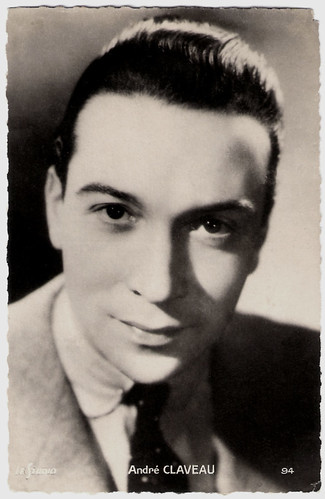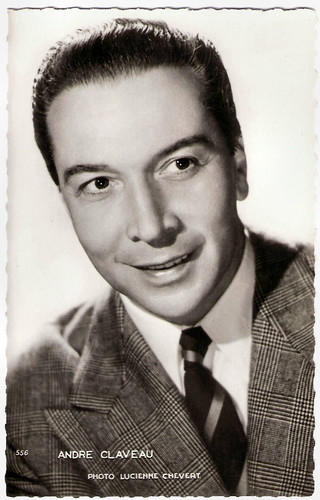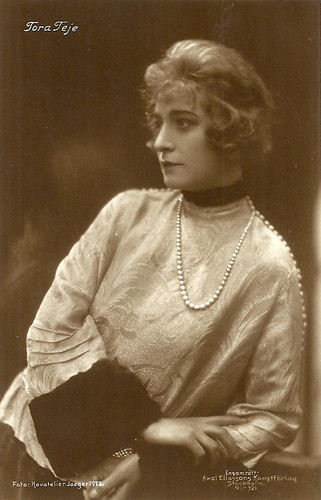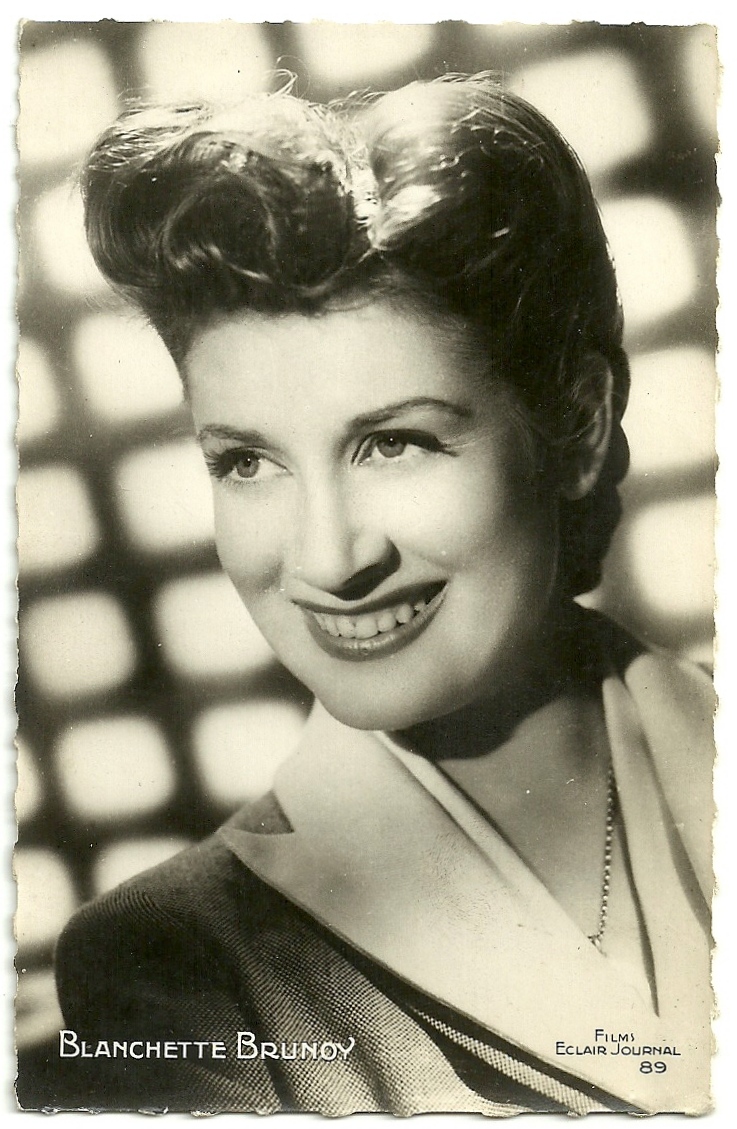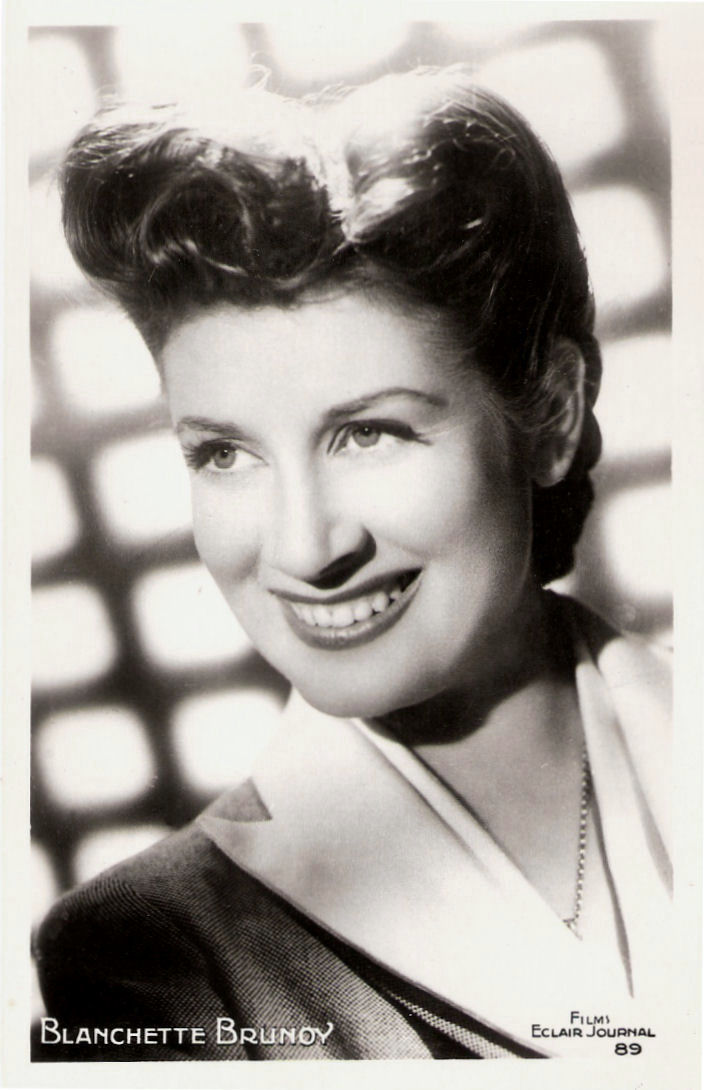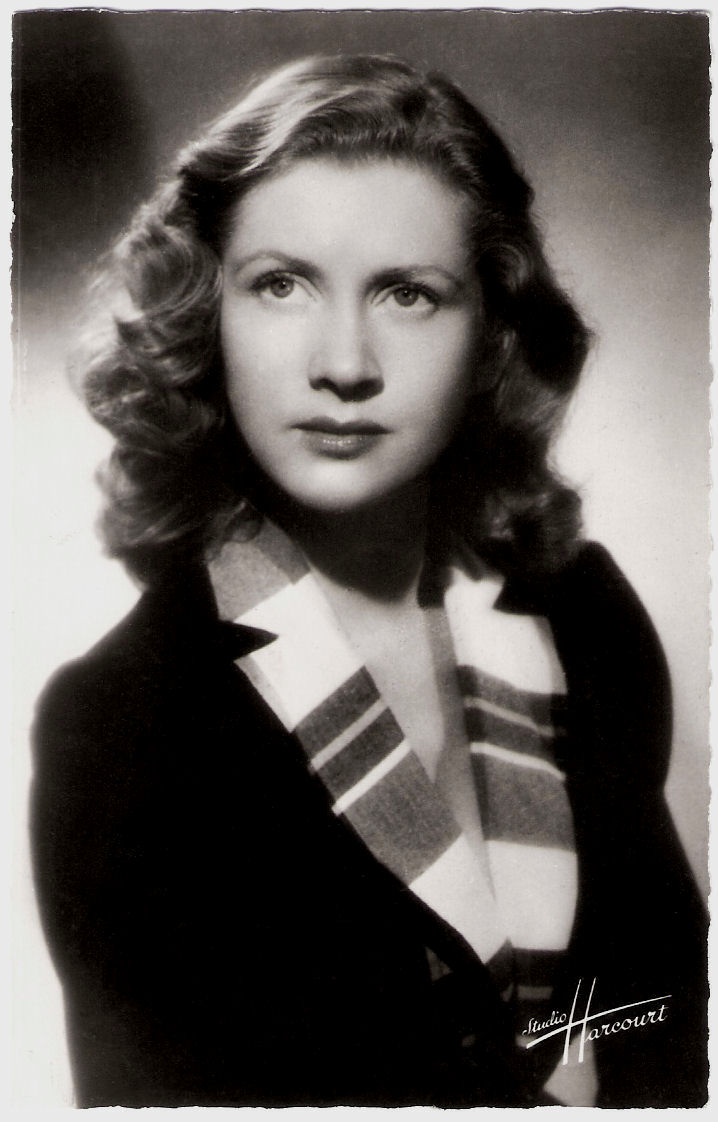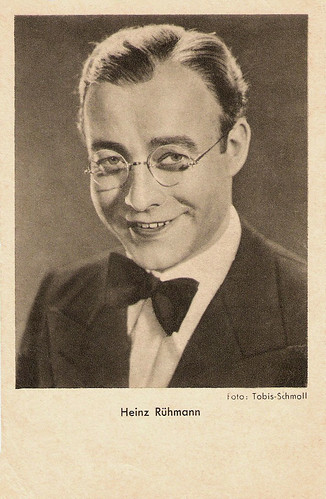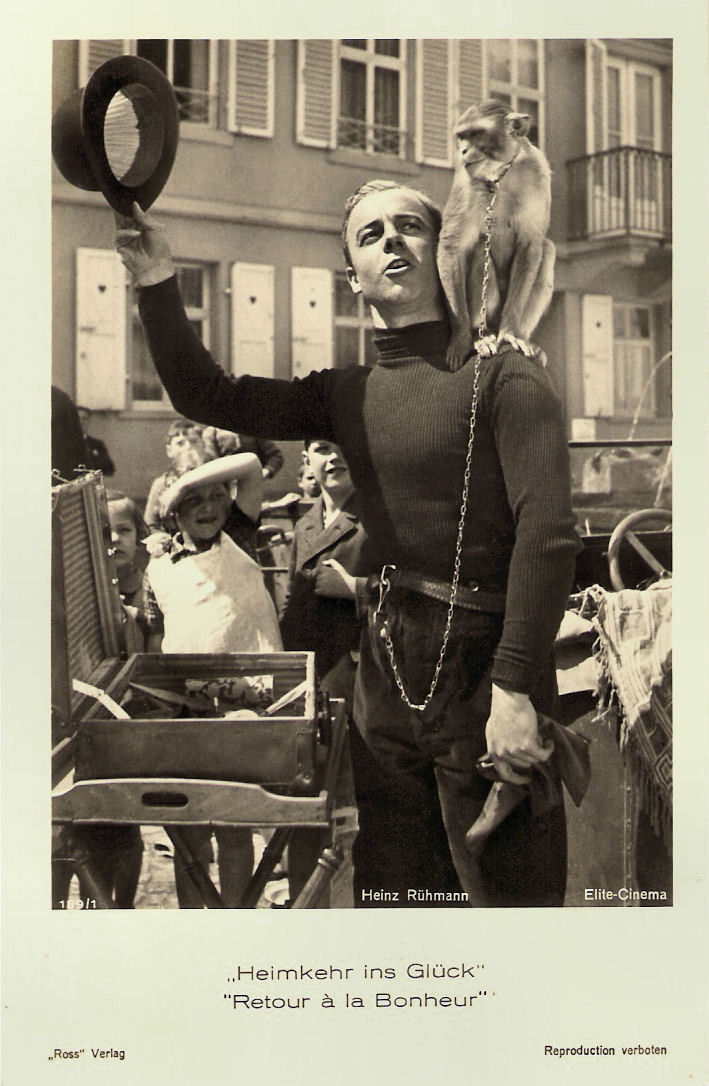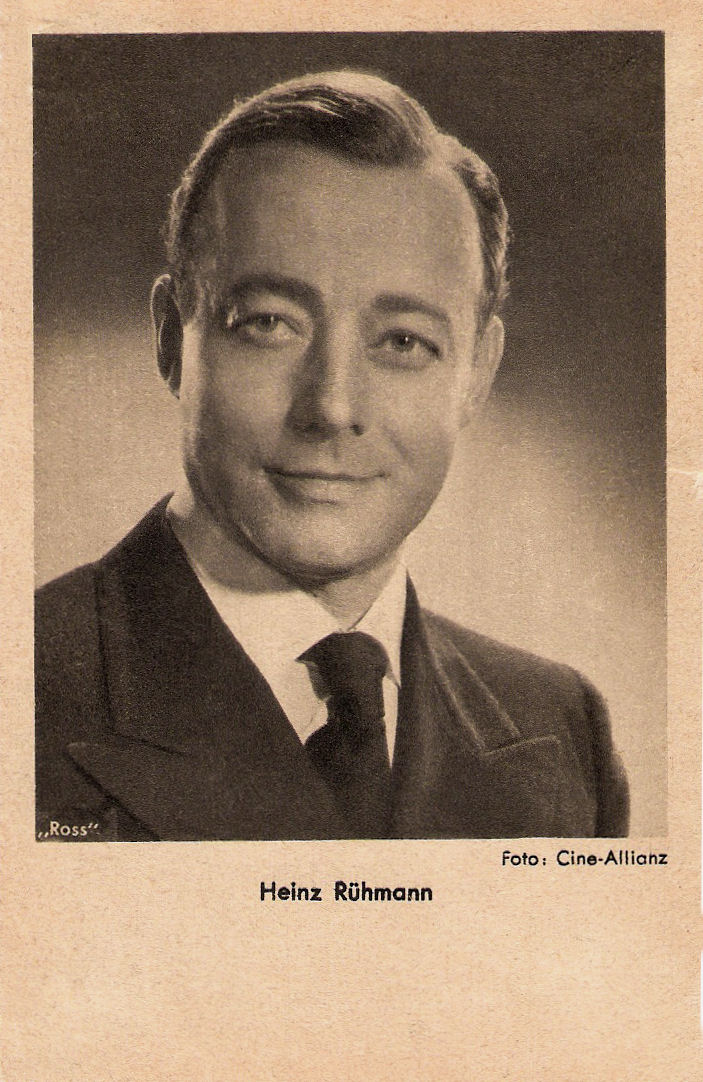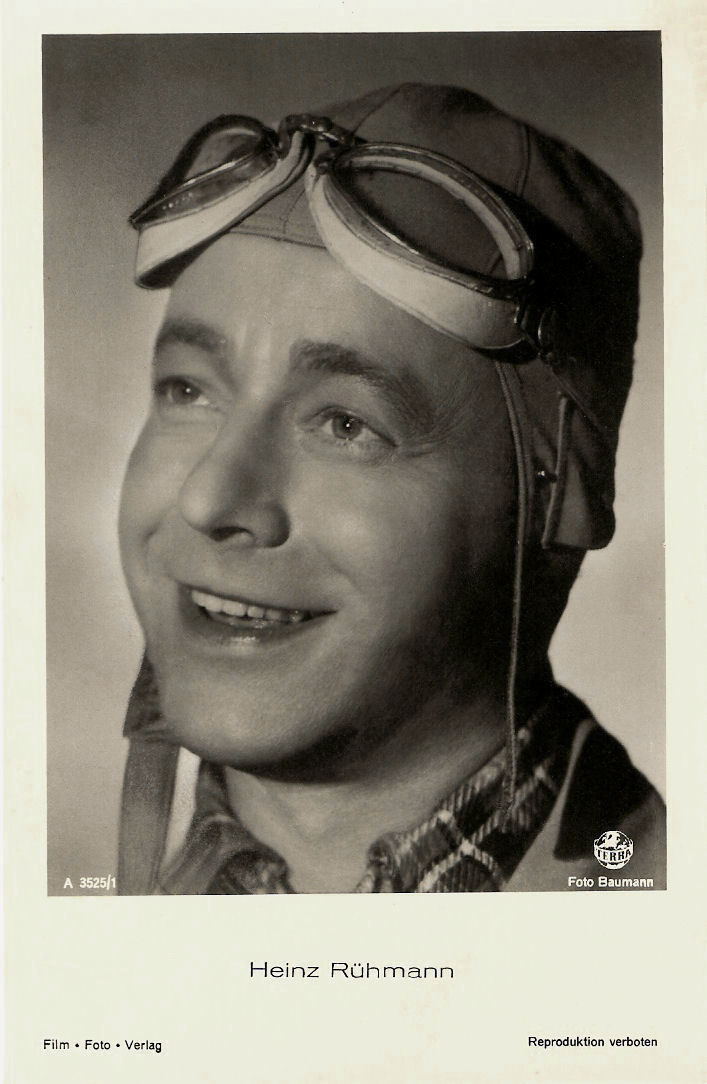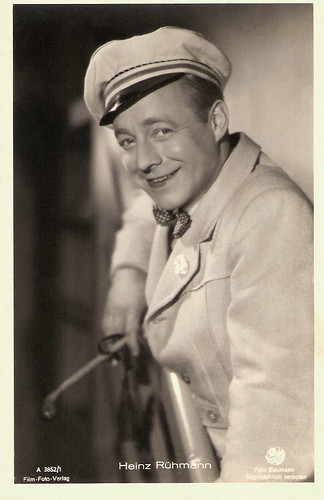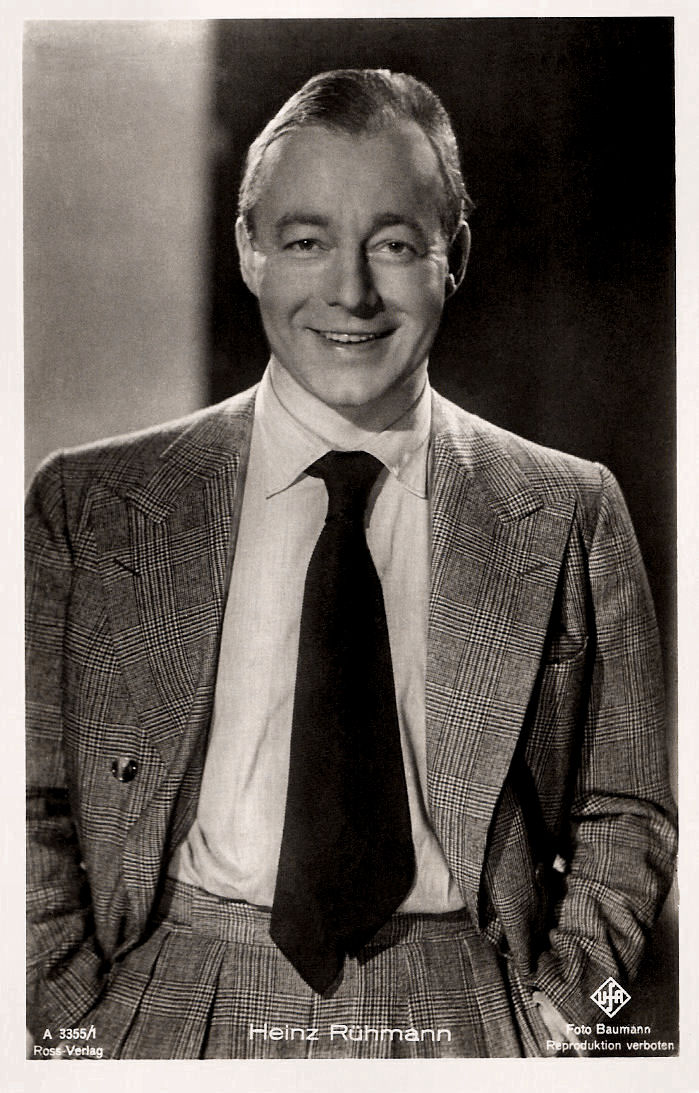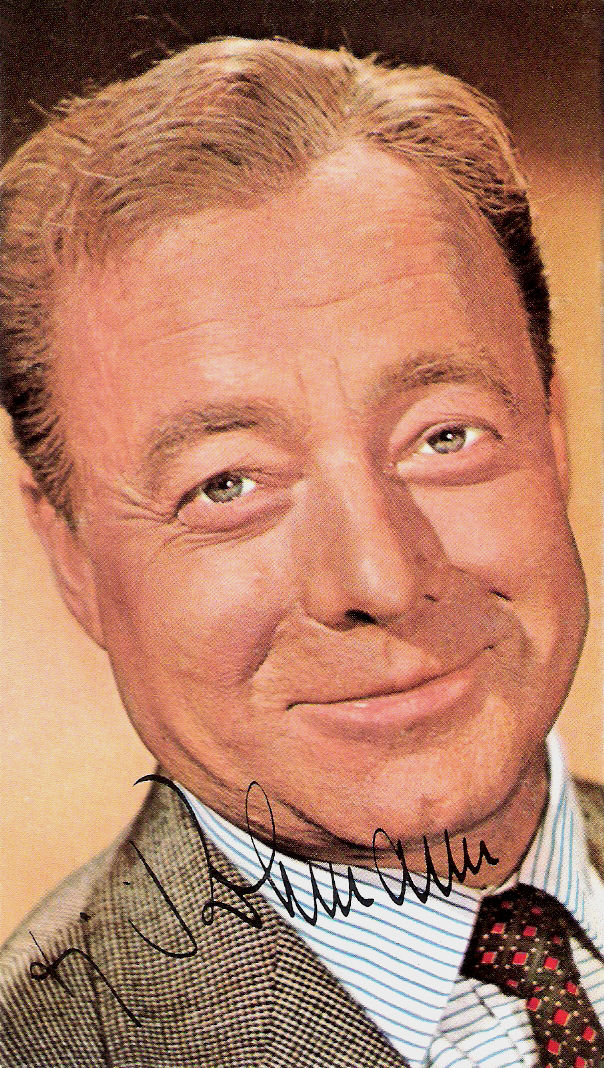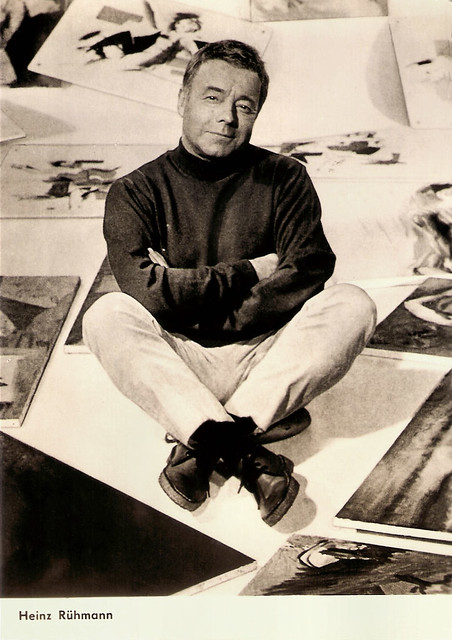Austrian actor Hannes Stelzer (1910-1944) was a popular Ufa hero during the Nazi period. He appeared in 18 films, including five for director Karl Ritter. In military service, the Lufwaffe pilot died at the end of World War II.
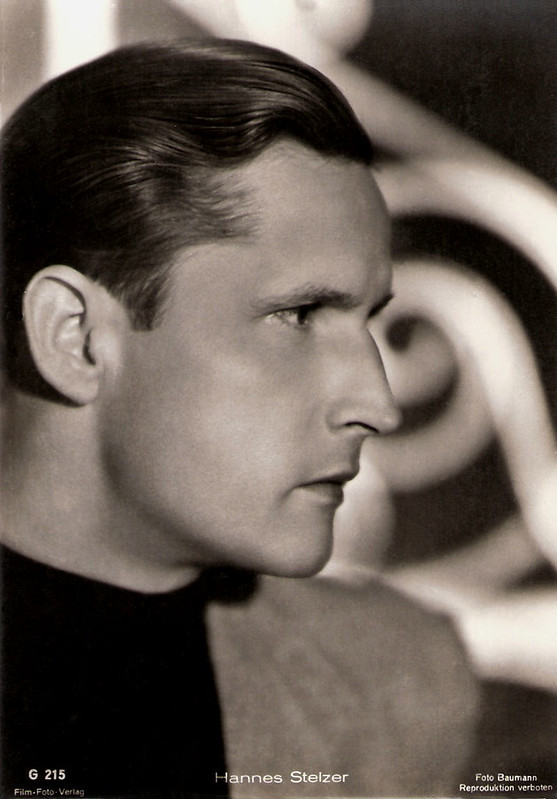
German postcard by Film-Foto-Verlag, no. G 215, 1941-1944. Photo: Baumann.
Hannes Stelzer was born in Graz, Austria in 1910. He was the eldest son of poor, travelling actors. Hannes often had to change schools because of the profession of his parents.
He had his first theatre experience in Mühlhausen in Thuringia, when his mother proposed her son for a children's dance scene in the operetta Die Fledermaus (The Bat). On his own initiative he applied successfully for the Vienna drama school at the age of fourteen. He lived in Vienna at the house of an uncle and earned the money for his studies as a carpenter.
Srelzer made his stage debut as the old Klinkert in Hasemanns Töchter by Adolph L’Arronge, but did it as a volunteer. In 1928 he received his first engagement at the Neues Theater (New Theatre) in Frankfurt am Main, and moved in 1931 to Bremen.
Here Stelzer played Romeo, but he also had parts in modern plays. After three years, Stelzer got an engagement in Darmstadt at the Landestheater (National Theatre), where he could play the great classical roles.
In 1935 he was considered for the role of the young Friedrich (Frederic) in the biopic Der junge und alte König/The Young and the Old King (Hans Steinhoff, 1935) with famous actor-producer Emil Jannings as his father. After first committing to the role, he eventually declined it in order to take up another stage engagement.
However, Emil Jannings was impressed by Stelzer and got him a role as a student of professor Traumulus (Jannings) in the film Traumulus/The Dreamer (Carl Froelich, 1935). Hal Erickson at AllMovie: “Keeping his tendency to overact in check, Emil Jannings delivers one of his best and subtlest performances in this film.”
After that, Stelzer’s activity shifted more and more to the cinema. The handsome rising film star played in comedies, costume dramas, and sophisticated contemporary films and quickly became a popular Ufa star.
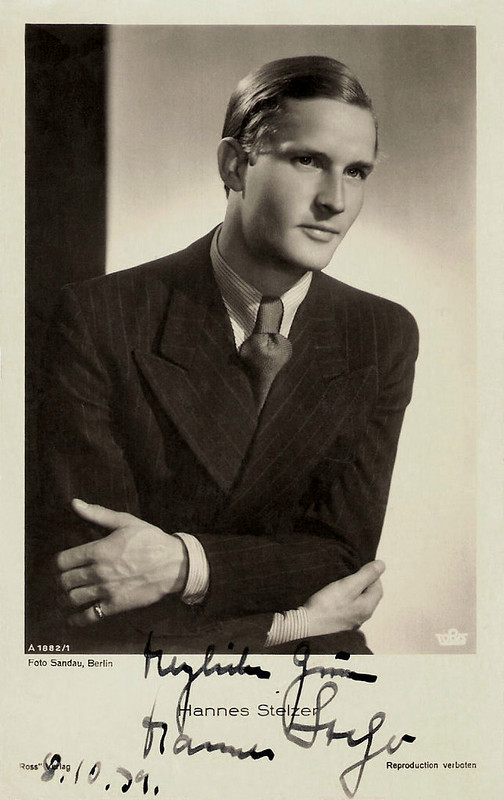
German postcard by Ross-Verlag, no. A 1882/1, 1937-1938 (signed in 1939). Photo: Sandau, Berlin / Tobis.
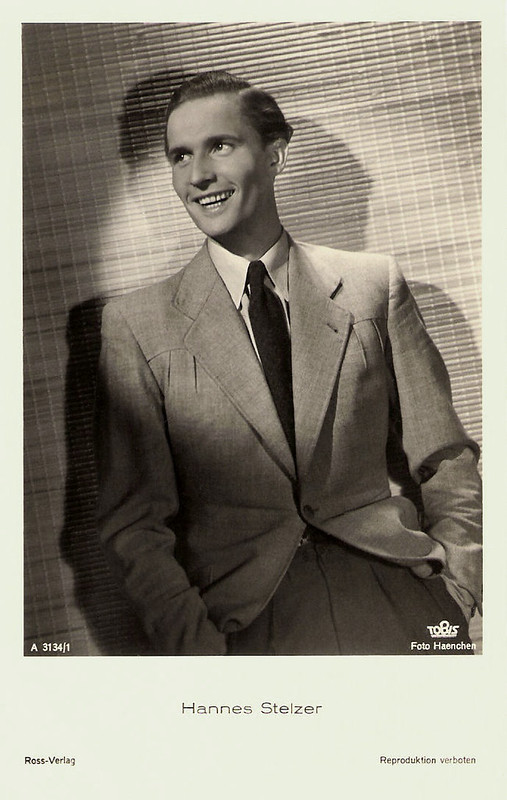
German postcard by Ross-Verlag, no. A 3134/1, 1939-1940. Photo: Haenchen / Tobis.
Hannes Stelzer’s looks corresponded to the German ideas of a courageous hero and he celebrated great successes as a tightrope walker in Truxa (Hans H. Zerlett, 1936) opposite La Jana, and as Wolfgang Amadeus Mozart in Eine kleine Nachtmusik/A Little Night Music (Leopold Hainisch, 1939).
Jan Onderwater at IMDb is not impressed by his performance in Truxa: “Blond haired Hannes Stelzer is a kind of vaudeville-Siegfried staring as if he is constantly amazed at appearing in this film at all; he was right.”
Other popular films were Der Herrscher/The Ruler (Veit Harlan, 1937) in which he played the son of a great industrialist (again Emil Jannings), the Fyodor Dostoevsky adaptation Der Spieler/The Gambler (Gerhard Lamprecht, 1938) starring Lida Baarová and Albrecht Schoenhals, and in the German version of the French-German circus drama Les gens du voyage/Fahrendes Volk/Travelling People (Jacques Feyder, 1938) in which he played the son of Hans Albers and Françoise Rosay.
With the outbreak of the Second World War, Stelzer could make less films. He was a pilot in Germany's Luftwaffe and between film roles took on combat missions.
Still he played starring roles, such as a Luftwaffe pilot in the propaganda film Stukas (1941). Director of the film was Luftwaffe Major Karl Ritter and the two worked five times together. The first had been the WWI epic Unternehmen Michael/Enterprise Michael (1937), followed by Bal Paré (1940) and Über alles in der Welt (1941).
Stelzer’s final film role was in Ritter's propaganda film Besatzung Dora/The Crew of the Dora (Karl Ritter, 1943), which finished filming in January 1943. In March of that year the film was banned from being released because scenes shot on the Leningrad front, in North Africa, and in western France could not be used, as German defeats and problems on the war fronts made the film untenable.
Around Christmas 1944, Hannes Stelzer died in a plane crash at the Eastern front near Komárom in Hungary. According to Wehrmacht reports, he crashed when he flew in a snowstorm in a high-voltage line, but probably his plane was shot down by the Soviets.
Hannes Stelzer was married with the actress Maria Bard, who had died shortly before him.

German postcard by Ross-Verlag, no. A 2696/1, 1939-1940. Photo: Haenchen / Tobis.

German postcard by Das Programm von Heute, Berlin / Ross-Verlag. Photo: Bavaria-Filmkunst.
Sources: Hal Erickson (AllMovie), Jan Onderwater (IMDb), German Films Poster Collection, Wikipedia (German), and IMDb.

German postcard by Film-Foto-Verlag, no. G 215, 1941-1944. Photo: Baumann.
Handsome Rising Film Star
Hannes Stelzer was born in Graz, Austria in 1910. He was the eldest son of poor, travelling actors. Hannes often had to change schools because of the profession of his parents.
He had his first theatre experience in Mühlhausen in Thuringia, when his mother proposed her son for a children's dance scene in the operetta Die Fledermaus (The Bat). On his own initiative he applied successfully for the Vienna drama school at the age of fourteen. He lived in Vienna at the house of an uncle and earned the money for his studies as a carpenter.
Srelzer made his stage debut as the old Klinkert in Hasemanns Töchter by Adolph L’Arronge, but did it as a volunteer. In 1928 he received his first engagement at the Neues Theater (New Theatre) in Frankfurt am Main, and moved in 1931 to Bremen.
Here Stelzer played Romeo, but he also had parts in modern plays. After three years, Stelzer got an engagement in Darmstadt at the Landestheater (National Theatre), where he could play the great classical roles.
In 1935 he was considered for the role of the young Friedrich (Frederic) in the biopic Der junge und alte König/The Young and the Old King (Hans Steinhoff, 1935) with famous actor-producer Emil Jannings as his father. After first committing to the role, he eventually declined it in order to take up another stage engagement.
However, Emil Jannings was impressed by Stelzer and got him a role as a student of professor Traumulus (Jannings) in the film Traumulus/The Dreamer (Carl Froelich, 1935). Hal Erickson at AllMovie: “Keeping his tendency to overact in check, Emil Jannings delivers one of his best and subtlest performances in this film.”
After that, Stelzer’s activity shifted more and more to the cinema. The handsome rising film star played in comedies, costume dramas, and sophisticated contemporary films and quickly became a popular Ufa star.

German postcard by Ross-Verlag, no. A 1882/1, 1937-1938 (signed in 1939). Photo: Sandau, Berlin / Tobis.

German postcard by Ross-Verlag, no. A 3134/1, 1939-1940. Photo: Haenchen / Tobis.
The Idea of a Courageous Hero
Hannes Stelzer’s looks corresponded to the German ideas of a courageous hero and he celebrated great successes as a tightrope walker in Truxa (Hans H. Zerlett, 1936) opposite La Jana, and as Wolfgang Amadeus Mozart in Eine kleine Nachtmusik/A Little Night Music (Leopold Hainisch, 1939).
Jan Onderwater at IMDb is not impressed by his performance in Truxa: “Blond haired Hannes Stelzer is a kind of vaudeville-Siegfried staring as if he is constantly amazed at appearing in this film at all; he was right.”
Other popular films were Der Herrscher/The Ruler (Veit Harlan, 1937) in which he played the son of a great industrialist (again Emil Jannings), the Fyodor Dostoevsky adaptation Der Spieler/The Gambler (Gerhard Lamprecht, 1938) starring Lida Baarová and Albrecht Schoenhals, and in the German version of the French-German circus drama Les gens du voyage/Fahrendes Volk/Travelling People (Jacques Feyder, 1938) in which he played the son of Hans Albers and Françoise Rosay.
With the outbreak of the Second World War, Stelzer could make less films. He was a pilot in Germany's Luftwaffe and between film roles took on combat missions.
Still he played starring roles, such as a Luftwaffe pilot in the propaganda film Stukas (1941). Director of the film was Luftwaffe Major Karl Ritter and the two worked five times together. The first had been the WWI epic Unternehmen Michael/Enterprise Michael (1937), followed by Bal Paré (1940) and Über alles in der Welt (1941).
Stelzer’s final film role was in Ritter's propaganda film Besatzung Dora/The Crew of the Dora (Karl Ritter, 1943), which finished filming in January 1943. In March of that year the film was banned from being released because scenes shot on the Leningrad front, in North Africa, and in western France could not be used, as German defeats and problems on the war fronts made the film untenable.
Around Christmas 1944, Hannes Stelzer died in a plane crash at the Eastern front near Komárom in Hungary. According to Wehrmacht reports, he crashed when he flew in a snowstorm in a high-voltage line, but probably his plane was shot down by the Soviets.
Hannes Stelzer was married with the actress Maria Bard, who had died shortly before him.

German postcard by Ross-Verlag, no. A 2696/1, 1939-1940. Photo: Haenchen / Tobis.

German postcard by Das Programm von Heute, Berlin / Ross-Verlag. Photo: Bavaria-Filmkunst.
Sources: Hal Erickson (AllMovie), Jan Onderwater (IMDb), German Films Poster Collection, Wikipedia (German), and IMDb.



